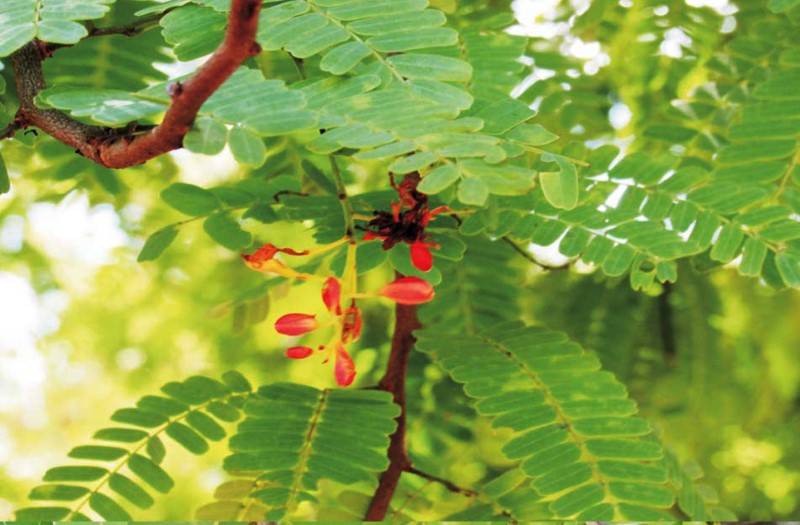Digital Garden
Trees of SN College Chempazhanthy:
Tamarindus indica L.
പുളി
| Synonym: | Tamarindus occidentalis Gaertn |
| Family | Caesalpinioideae |
| Local Names: | Puli, Tamarind tree, Indian date |
 |
|
Flowering and fruiting: September – April Distribution: Native of Tropical Africa; introduced and widely grown in India and other parts of tropics Habitat: Cultivated Uses: Fruits edible. Syrup made from the ripe fruit is drunk in order to keep the digestive organs in good condition, and also as a remedy for coughs and chest colds. The fruit pulp may be used to treat rheumatism, as an acid refrigerant, a mild laxative and also to treat scurvy. Key Characters: Tamarindus indica are trees with bark brown to brownish-black. Leaves paripinnate, alternate, leaflets, opposite, oblong, margin entire. Flowers bisexual, yellow with reddish-pink dots, in lax terminal racemes. Calyx; lobes 4, subequal, oblong, imbricate. Petals 3, outer one, rolled up, pink dotted, lateral 2, clawed, subequal, oblong, imbricate. Petals 3, outer one, rolled up, pink dotted, lateral 2, clawed, subequal, oblong-lanceolate, lower pair scaly. Stamens 9 monadelphous, only 3 fertile; anthers versatile; ovary half inferior, ovules many. Fruit a pod. |
|